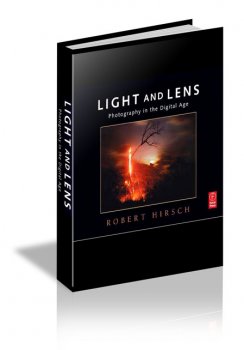- Creating and developing AutoCAD drawings
- Drawing curves and applying solid fills
- Effectively using hatches, fields, and tables
- Manipulating dynamic blocks and attributes
- Linking drawings to databases and spreadsheets
- Rendering realistic interior views with natural lighting
- Giving a hand-drawn look to 3D views
- Presenting 3D models with cutaway and x-ray views
- Making spiral forms with the Helix and Sweep tools
- Finding open drawings fast with the new Quick View Drawings tool
- Browsing recent files and toolbar selections using the new Menu Browser
- Converting multiple layer settings and other layer translator options
- Explore the New Ribbon Interface
- Automate Repetitive Tasks with the Action Recorder
- Organize Drawing Information with Layers
- Annotate, Secure, and Authenticate Files
- Track Your Projects with the Sheet Set Manager
- Publish Drawings over the Internet and eTransmit Your Files

Mastering AutoCAD 2009 and AutoCAD LT 2009
Saturday, February 19, 2011
Mastering AutoCAD 2009 and AutoCAD LT 2009
Tuesday, February 15, 2011
Building Facebook Applications For Dummies
- Work with the Facebook API
- Build applications that take advantage of Facebook’s News Feed and Wall
- Migrate existing Web applications to Facebook
- Create mobile apps for Facebook
- Use Facebook’s markup and query languages
- Get your app noticed by Facebook users
 |
| Building Facebook Applications For Dummies |
Android Wireless Application Development
- Master the latest Android development tools and Android SDK 1.5
- Use the Eclipse Development Environment for Java to develop and debug Android applications
- Design Android applications that are more efficient, reliable, and easier to use and offer better performance
- Work with Android’s optional hardware-specific APIs
- Use Android’s APIs for data, storage, networking, telephony, Location-Based Services (LBS), multimedia, and 3D graphics
- Leverage advanced Android capabilities such as Notifications and Services
- Ensure quality through solid test planning, efficient testing, and comprehensive defect tracking
- Make more money from your Android applications
 |
| Android Wireless Application Development second edition DOWNLOAD |
Android Essentials
- Thorough, complete, and useful work on the nuts and bolts of applicatio development in Android
- Example driven and practically minded
- A tool for hobbyists and professionals who want to create production–quality applications
What you’ll learn
- Understand how an Android application functions and communicates with the handset that hosts it.
- Comprehend the complexities of timers, services, and multimedia playback.
- Create and display a rich mix of custom–rendered screens and tailored Android widgets.
- Understand how location–based services are becoming more and more important in the mobile world.
- See how to use Google’s powerful Map tool.
- Explore the intricacies of network connectivity in the mobile world.
Who this book is for
 |
| Android Essentials |
Thursday, February 10, 2011
The Professional Risk Managers' Guide to the Energy Market
- Energy Futures Today
- The Over-the-Counter Energy Derivatives Market
- Energy Derivatives Structures
- The Nordic Electricity Markets
- Market Risk Measurement and Management for Energy Firms
- Best Practices in Credit Risk Management for Energy and Commodity Derivatives
- Natural Gas Trading
- Risk Management in Energy-Focused Commodity Futures Investing
- The ISDA Master Agreement Ten Years On, ISDA 2002
 |
| The Professional Risk Managers' Guide to the Energy Market |
Hydrometeorology Forecasting and Applications
 |
| Hydrometeorology Forecasting and Applications |
Cloud Connectivity and Embedded Sensory Systems
- Offers readers a single-source entry into the world of cloud-centric, embedded intelligent sensory systems;
- Presents sensory networks in the context of “cloud computing”;
- Promotes the notion of migrating software on virtualized hardware;
- Emphasizes the role of redundant network communication and computation to optimize safety and security;
- Distinguishes between cloud, swarm and flock computing, in order to make the extended network more intelligent and therefore less dependent on the quality of the individual sensors.
Understanding TCP/IP: A clear and comprehensive guide to TCP/IP protocols
- Essential reference to what's really going on at the network level
- Covers Telnet, FTP, HTTP, SMTP, ESMTP, IMAP4, POP3, NNTP, and LDAP
- IP4 and IP6
- Chapter 1 is a general introduction to networking concepts the understanding of which is required for reading the book. The chapter introduces the Open System Interconnection (OSI) networking framework, which defines seven layers for implementing network protocols, and the simpler TCP/IP model. It also explains the three different data transmission methods: synchronous, asynchronous, and packet.
- Chapter two focuses on tools that can be used to monitor data transfers on the network. Three tools are covered: MS Network Monitor and Ethereal.
- Chapter 3 discusses the first of the seven layers of the OSI model: the physical layer. Serial lines, modems, digital circuits, and other hardware devices are covered. The chapter also explains how the choice of the physical layer depends on the choice of the link protocol, with emphasis on Ethernet, Fast Ethernet, and Gigabyte.
- Chapter 4 explains the link layer, focusing on the following link protocols: Serial Line Internet Protocol (SLIP), Compressed SLIP (CSLIP), High-level Data Link Control (HDLC), Point-to-Point Protocol (PPP), Frame Relay, and Ethernet.
- Chapter 5 talks about the Internet Protocol (IP). It covers IP datagram, Internet Control Message Protocol (ICMP), Address Resolution Protocol (ARP), Reverse ARP (RARP), and Internet Group Management Protocol (IGMP).
- Chapter 6 covers IP addresses in IP version 4. The various classes of IP addresses, reserved IP addresses, net masks, subnetworks, and super networks.
- Chapter 7 covers IP routing and IP forwarding, including handling routing tables; routing protocols, such as Routing Vector Protocols (RVP) and Link State Protocols (LSP); and Neutral Exchange Point (NIX).
- Chapter 8 focused on IP version 6, which enlarges the IP address size from 4 to 16 bytes and introduces some changes to the IP datagram.
- Chapter 9 covers the Transmission Control Protocol (TCP), the protocol that transfers data between applications on different computers.
- Chapter 10 presents the simpler alternative to TCP, the User Datagram Protocol (UDP).
- Chapter 11 covers the Domain Name System (DNS), which translates IP addresses into domain names and vice versa.
- Chapter 12-17 covers a number of application protocols, namely Telnet, FTP, HTTP, SMTP, ESMTP, IMAP4, POP3, NNTP, and LDAP.
- Appendix A covers working with CISCO routers. since CISCO is considered the dominant company in this area.
 |
| Understanding TCP/IP DOWNLOAD |
Manga Studio For Dummies
- Build and use page templates
- Rough in your comic with penciling techniques
- Work 100% digital, or use a combination of digital and traditional tools if you prefer
- Work with layers, rulers, and panels
- Add speech bubbles and sound effects text
- Ink your work and add tones
- Prepare your creations for print or distribution on the Web
Use the newest features of Manga Studio to bring your ideas to life
Sunday, February 6, 2011
LIGHT AND LENS : PHOTOGRAPHY IN THE DIGITAL AGE
 |
| LIGHT AND LENS : PHOTOGRAPHY IN THE DIGITAL AGE |
Friday, February 4, 2011
La régente de Cartage
Mais la surprise dans cette triste vie du sérail tunisien vient de la forte personnalité de Leila, bien plus proche d’une Catherine de Médicis que d’une courtisane de boudoir. Son appât du gain et son habileté à placer les siens en font la digne héritière de Wassila Bourguiba, qui gouverna la Tunisie dans l’ombre d’un président vieillissant et malade. Connue pour la place faite aux femmes dans la vie publique, la Tunisie est le seul pays arabe où l’épouse du chef de l’État puisse prétendre à un tel rôle. Après l’influence, le pouvoir ? Alors que se préparait une nouvelle élection présidentielle truquée de Ben Ali, Leila tentait de se poser en régente, avec l’aide des siens et le silence complice de la France.
Nicolas Beau et Catherine Graciet plongent ici dans les arcanes, les alliances et les trahisons d’un pouvoir familial mesquin et perverti, qui tient lieu d’État dans une société à la dérive. Et où tous les signaux ? politiques, économiques et sociaux ? passent progressivement au rouge, tandis que le président et son entourage se préoccupent surtout de s’enrichir et de réprimer toute contestation.
 |
| La régente de Cartage DOWNLOAD |
25 Beautiful Homes - March 2011
 |
| Beautiful Homes - March 2011 |
Thursday, February 3, 2011
Visual Studio 2010 ALL-IN-ONE FOR Dummies
Developers, listen up! Visual Studio 2010 offers many interface changes and a dizzying array of editors, controls, designers, and other tools. Whether you're starting from scratch with Visual Studio or need to boost your knowledge of coding, building apps, or accessing data, you'll find what you need to be productive.
-
Get what you need — newbies can learn Visual Studio basics while more experienced developers can focus on what's new in the 2010 version
-
Code mode — create source code with the code editor, explore class anatomy in .NET, and debug, analyze, and test your code
-
Building blocks — explore types of applications you can build; learn to create C++, Windows, and Web applications; and deploy them on the cloud
-
Digging data — look at the new data access code-generation features in Visual Studio
-
Take control — manage the build process and apply source code control
Open the book and find:
-
The languages of .NET
-
Advice on installing Visual Studio
-
Basic info about object-oriented programming
-
Tips on handling exceptions and debugging
-
How to lay out a Web site
-
Why you need ADO.NET
-
How to build applications for Facebook
-
What the Visual Studio Team System offers
Visit the companion Web site at www.dummies.com/go/vs2010, where you'll find a section featuring source code, resource links, and sample applications for each minibook.
7 books in 1
The Chronicles Of Narnia C.S. Lewis
The series contains many allusions to traditional Christian ideas, presented in a format designed to make them easily accessible to younger readers; however, the books can also be read purely for their adventure, colour, and richness of ideas, and as a result have become favourites of children and adults, Christians and non-Christians alike. (They had, for example, considerable success in their Israeli Hebrew translation.) In addition to employing Christian themes, Lewis also borrows characters and ideas from Greek and Roman mythology, as well as from traditional British and Irish fairy tales.
The Chronicles of Narnia present the adventures of children who play central roles in the unfolding history of the fictional realm of Narnia, a place where animals talk, magic is common, and good battles evil. Each of the books (with the exception of The Horse and His Boy) feature as their protagonists children from our world who are magically transported to Narnia, where they are called upon to help the lion Aslan set some wrong to right.



